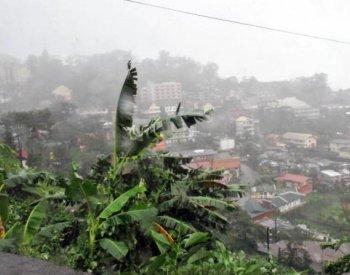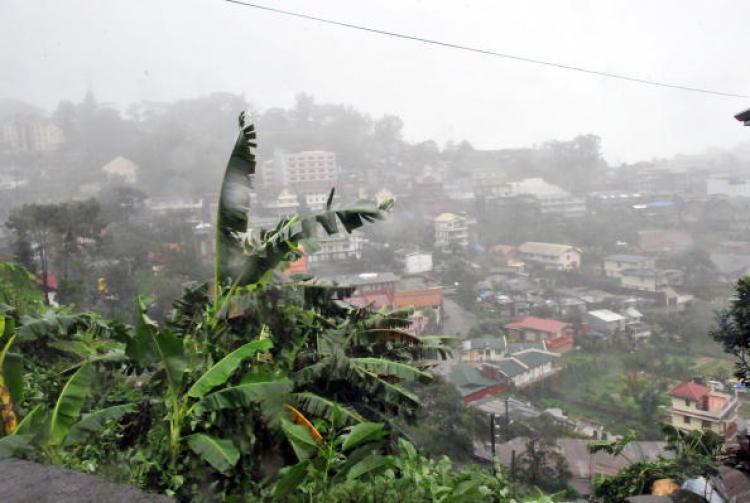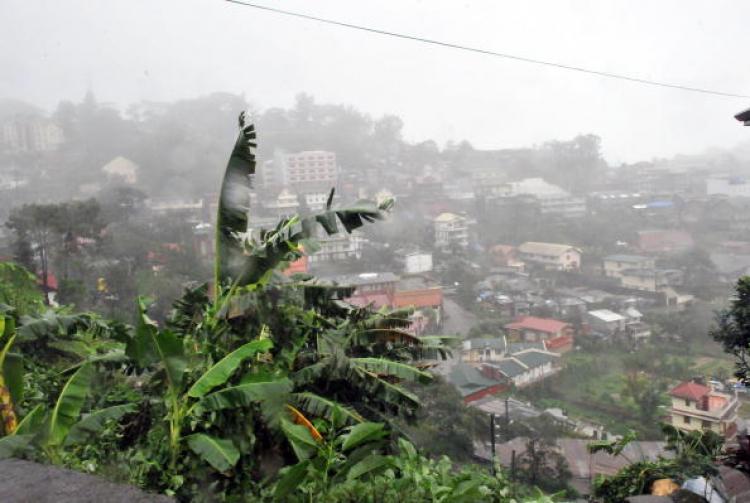Typhoon Megi slammed into the northern Philippines Monday, bringing heavy rains and wind gusts as high as 160 mph (260 kph).
Typhoon Megi made landfall at Palana Bay in Isabella Province on the main Philippine island of Luzon, felling trees and power lines, and stranding some residents in their homes.
“We are marooned inside our home. We cannot go out,” said Ernesto Macadangdang of Burgos town Isabella province, according to AFP. “The winds and rain are very strong. Many trees are being uprooted or snapped in half.”
Government climatologist Rosalinda de Guzman told AFP that Megi was the strongest typhoon to hit the Philippines since Durian in 2006.
Megi is not expected to reach the Philippine capital of Manila, but weather forecasters are telling residents to prepare for heavy rains.
Six or seven typhoons hit the Philippines annually of the 27 that form on average each year in the Pacific Basin, according to the U.S. Navy–U.S. Airforce Joint Typhoon Warning Center. A “Super Typhoon” has wind speeds exceeding 100 mph (185 kph).
Last year, Tropical Storm Ketsana and Typhoon Parma struck Manila within a week of each other, killing around 1100 people, AFP reported. Parma caused US$608 million in damage according to the Philippine National Disaster Coordinating Council.
Tropical Storm Thelma caused more than 6000 deaths as it swept across the Philippines in 1991.
Typhoon Megi made landfall at Palana Bay in Isabella Province on the main Philippine island of Luzon, felling trees and power lines, and stranding some residents in their homes.
“We are marooned inside our home. We cannot go out,” said Ernesto Macadangdang of Burgos town Isabella province, according to AFP. “The winds and rain are very strong. Many trees are being uprooted or snapped in half.”
Government climatologist Rosalinda de Guzman told AFP that Megi was the strongest typhoon to hit the Philippines since Durian in 2006.
Megi is not expected to reach the Philippine capital of Manila, but weather forecasters are telling residents to prepare for heavy rains.
Six or seven typhoons hit the Philippines annually of the 27 that form on average each year in the Pacific Basin, according to the U.S. Navy–U.S. Airforce Joint Typhoon Warning Center. A “Super Typhoon” has wind speeds exceeding 100 mph (185 kph).
Last year, Tropical Storm Ketsana and Typhoon Parma struck Manila within a week of each other, killing around 1100 people, AFP reported. Parma caused US$608 million in damage according to the Philippine National Disaster Coordinating Council.
Tropical Storm Thelma caused more than 6000 deaths as it swept across the Philippines in 1991.






